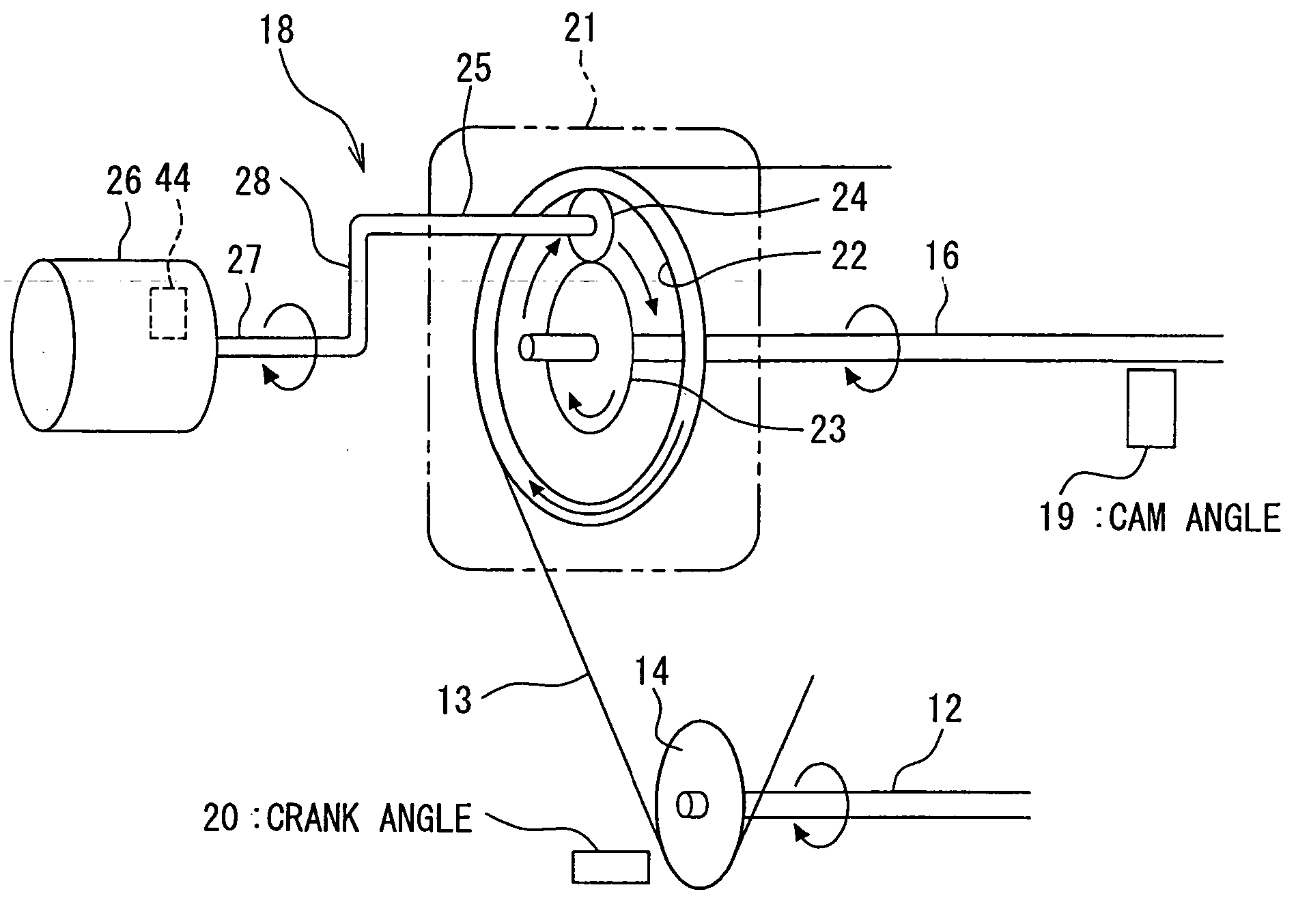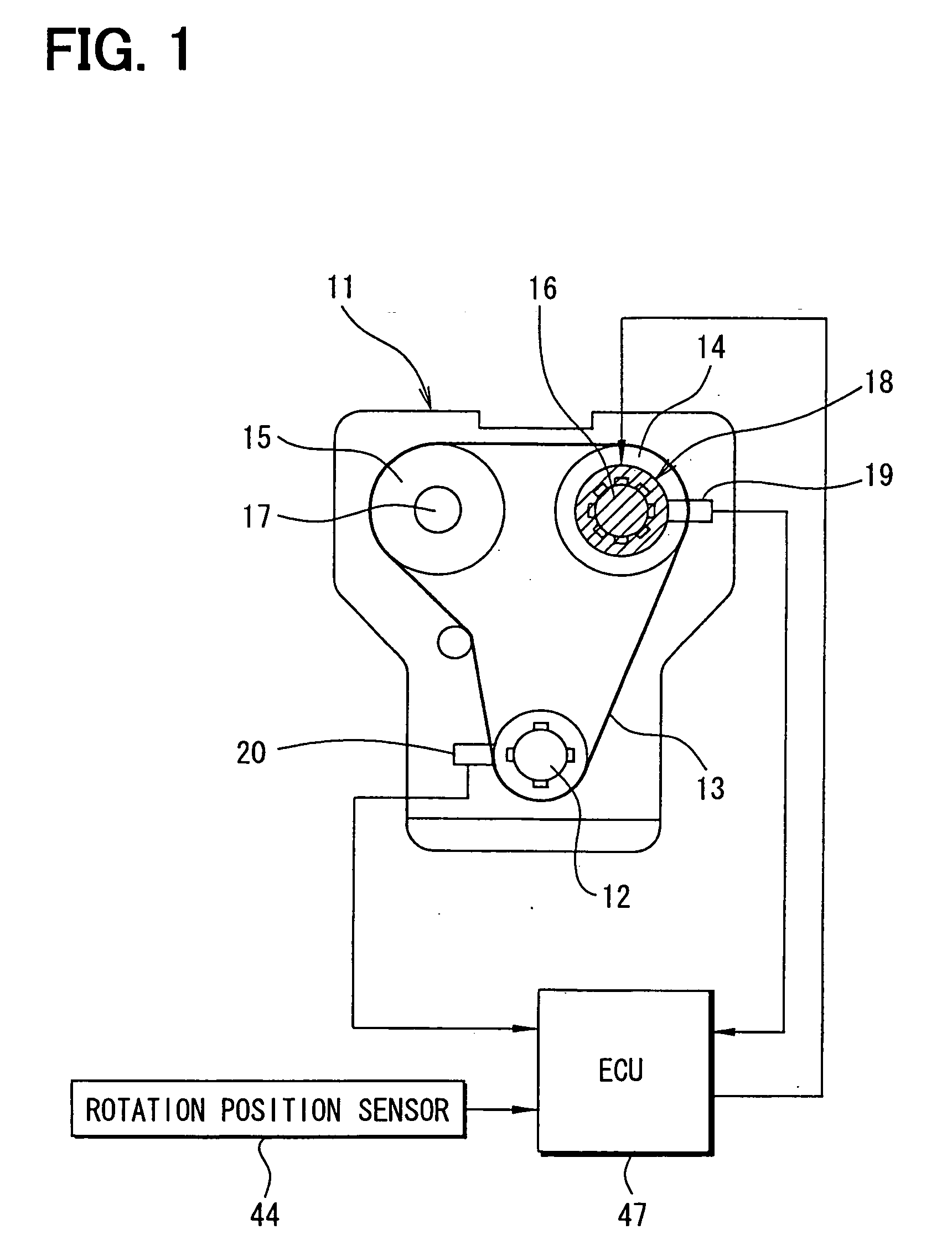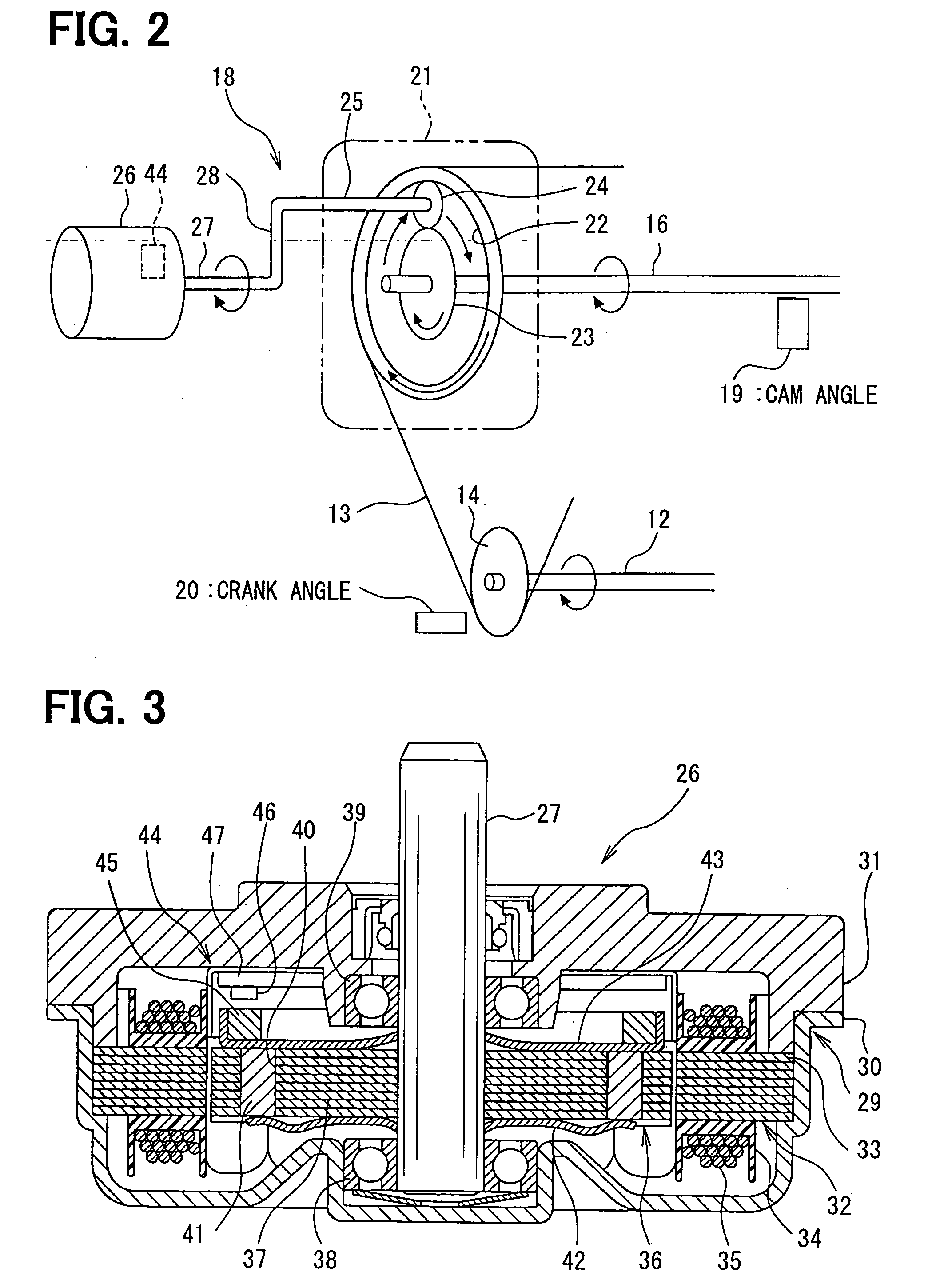Engine rotation condition detecting system and engine control method
a technology of condition detection and engine control, which is applied in the direction of valve details, valve arrangements, valve drives, etc., can solve the problems of inability to accurately detect low engine speed or stop position, inability of electromagnetic sensor pulse signal to detect reverse rotation, and inability to generate large induction voltage at low engine speed conditions. to achieve accurate detection of rotation condition and less cost
- Summary
- Abstract
- Description
- Claims
- Application Information
AI Technical Summary
Benefits of technology
Problems solved by technology
Method used
Image
Examples
first embodiment
[0018] Referring first to FIG. 1, an internal combustion engine 11 has a crankshaft 12, an intake side camshaft 16 and an exhaust side camshaft 17. The camshafts 16 and 17 are coupled with the crankshaft 12 by a timing chain or belt 13 through respective sprockets 14 and 15 to be driven by the crankshaft 12. A motor-driven variable valve timing (VVT) apparatus 18 is provided on the intake side camshaft 16. The apparatus 18 varies the rotation phase (camshaft phase) of the intake side camshaft 16 relative to the crankshaft 12, so that the valve timing (open / close timing) of an intake valve (not shown) driven by the intake side camshaft 16 is varied.
[0019] A cam angle sensor 19 is provided near an outer periphery of the camshaft 16 to generate a cam angle signal at every predetermined cam angle rotation. A crank angle sensor 20 is provided near an outer periphery of the crankshaft 12 to generate a crank angle signal at every predetermined crankshaft angular rotation. The sensors 19 a...
second embodiment
[0039] In the second embodiment, the ECU 48 detects the engine rotation speed NE and the engine rotation direction based on the output signal (MPSO) of the motor rotation sensor 44 by controlling the rotation phase of the camshaft 16 to the most retarded or advanced position relative to the rotation phase of the crankshaft 12, when the rotation speed NE is low. The ECU 48 further detects the engine rotation stop position based on the output signal (MPSO) of the motor rotation sensor 44 when the engine 11 is stopped with the camshaft rotation phase being held controlled to the most retarded or advanced position.
[0040] Specifically, as shown in FIG. 5, the ECU 48 controls the camshaft rotation phase to the most retarded position (MRP) or most advanced position (MAP) at step 104a when the engine rotation speed NE is determined to be lower than the reference speed (Nref) at step 102. In this instance, the driving motor 26 is driven to move a movable part (not shown) of the VVT apparatu...
PUM
 Login to View More
Login to View More Abstract
Description
Claims
Application Information
 Login to View More
Login to View More - R&D
- Intellectual Property
- Life Sciences
- Materials
- Tech Scout
- Unparalleled Data Quality
- Higher Quality Content
- 60% Fewer Hallucinations
Browse by: Latest US Patents, China's latest patents, Technical Efficacy Thesaurus, Application Domain, Technology Topic, Popular Technical Reports.
© 2025 PatSnap. All rights reserved.Legal|Privacy policy|Modern Slavery Act Transparency Statement|Sitemap|About US| Contact US: help@patsnap.com



